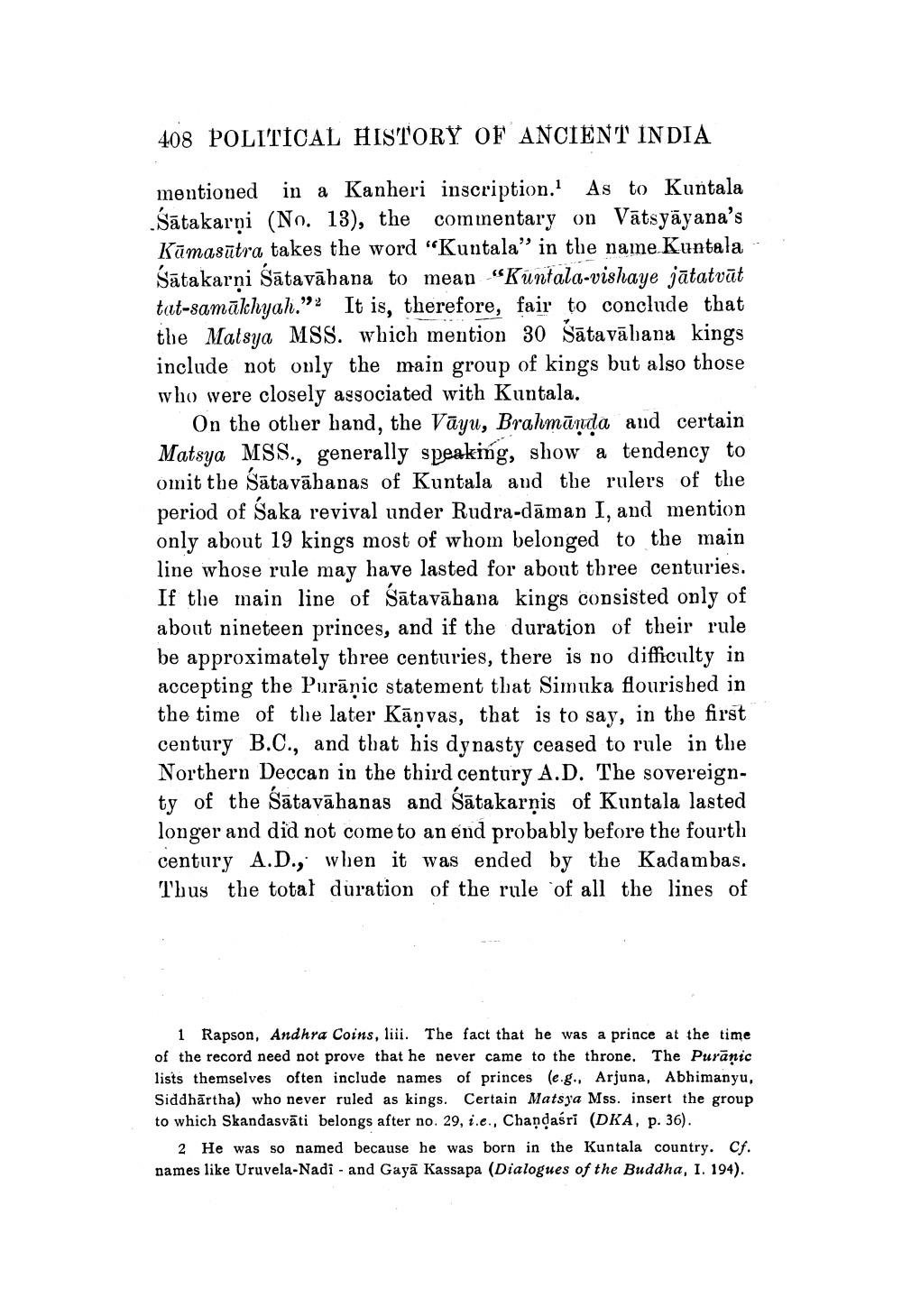________________
408 POLITICAL HISTORY OF ANCIENT INDIA
mentioned in a Kanheri inscription. As to Kuntala Sātakarņi (No. 13), the commentary on Vātsyāyana's Kāmasūtra takes the word "Kuntala” in the name Kuntala Śātakarņi Sātavāhana to mean "Kuntala-vishaye jātatvāt tat-samākhyah."? It is, therefore, fair to conclude that the Matsya MSS. which mention 30 Sātavāhana kings include not only the main group of kings but also those who were closely associated with Kuntala.
On the other hand, the Vāyu, Brahmānda and certain Matsya MSS., generally speaking, show a tendency to omit the Sātavāhanas of Kuntala and the rulers of the period of Saka revival under Rudra-dāman I, and mention only about 19 kings most of whom belonged to the main line whose rule may have lasted for about three centuries. If the main line of śātavābana kings consisted only of about nineteen princes, and if the duration of their rule be approximately three centuries, there is no difficulty in accepting the Purānic statement that Simuka flourished in the time of the later Kāņvas, that is to say, in the first century B.C., and that his dynasty ceased to rule in the Northern Deccan in the third century A.D. The sovereignty of the Sātavāhanas and Śātakarņis of Kuntala lasted longer and did not come to an end probably before the fourth century A.D., when it was ended by the Kadambas. Thus the total duration of the rule of all the lines of
1 Rapson, Andhra Coins, liii. The fact that he was a prince at the time of the record need not prove that he never came to the throne. The Purānic lists themselves often include names of princes (e.g., Arjuna, Abhimanyu, Siddhārtha) who never ruled as kings. Certain Matsya Mss. insert the group to which Skandasvāti belongs after no. 29, i.e., Chandasri (DKA, p. 36).
2 He was so named because he was born in the Kuntala country. Cf. names like Uruvela-Nadi - and Gayā Kassapa (Dialogues of the Buddha, I. 194).




